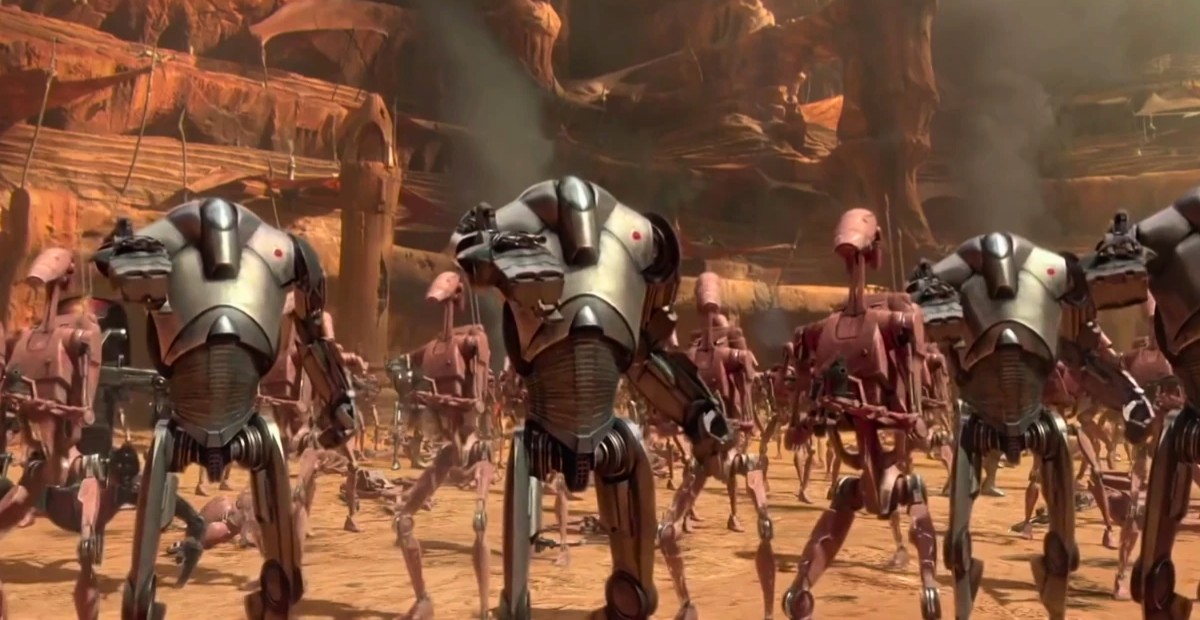I’ve always thought: if lightsabers were such a threat, why didn’t the Separatists just build an army of droids that could block them? After digging into the actual story behind those droids, it turns out they tried. And the reason they didn’t stick with it tells us a lot about how the Clone Wars really worked.
They Actually Made Lightsaber-Resistant Droids — And They Were Terrifying
Toward the end of the Clone Wars, the Separatists built the C-B3 cortosis battle droid. These were upgraded versions of the B2 super battle droids, but with cortosis armor that could block lightsaber strikes.
Anakin Skywalker called them “unstoppable” when he first ran into them. Their armor was so strong it made them immune to lightsabers and blaster bolts everywhere except their sensors.
These droids were made in secret on Mokivj by Duke Solha and his team. On paper, they were exactly what you’d expect the CIS to want — a Jedi’s worst nightmare.
So Why The Separatists Never Went All‑In on Lightsaber‑Resistant Droids?
It All Comes Down to Cost and Quantity
The biggest reason was cost. Materials like cortosis, beskar, and phrik can block or resist a lightsaber, but they’re incredibly rare and expensive. The Separatists were fighting a war that relied on huge numbers of cheap droids.
hey knew it was better to flood planets with millions of basic B1 and B2 units rather than sink a huge budget into a handful of advanced, rare units.
Even Droideka shield units cost roughly 21,000 credits each, making them too costly for mass deployment. The Separatist army worked because it was built for quantity, not for quality.
Palpatine Never Intended Them to Win
Another big reason was Palpatine himself. He didn’t want the Separatists to win. The whole point of the Clone Wars was to justify the rise of the Empire, and making the droid army too strong would have ruined that plan.
The best example of this is the C-B3 battle droid. The Techno Union experimented with making units covered in cortosis — a material that could block or short‑out lightsabers. These units worked well, too well, and posed a serious threat to the Jedi.
In fact, in the book Thrawn: Alliances, Anakin and Thrawn discover a hidden factory making C-B3 units. Palpatine leaked its location to the Jedi, making sure Anakin and Thrawn destroyed it before production ramped up. This kept the Separatist army strong enough to fight, but never strong enough to win.
The Force Was Always the Bigger Problem
Even if the Separatists had managed to create an army of lightsaber‑resistant units, it wouldn’t have solved the biggest problem: the Force itself. The Jedi weren’t relying on lightsabers alone.
They could still use the Force to pick a droid apart piece by piece, crush it, or bury it. Making expensive units with rare materials didn’t protect them from that.

